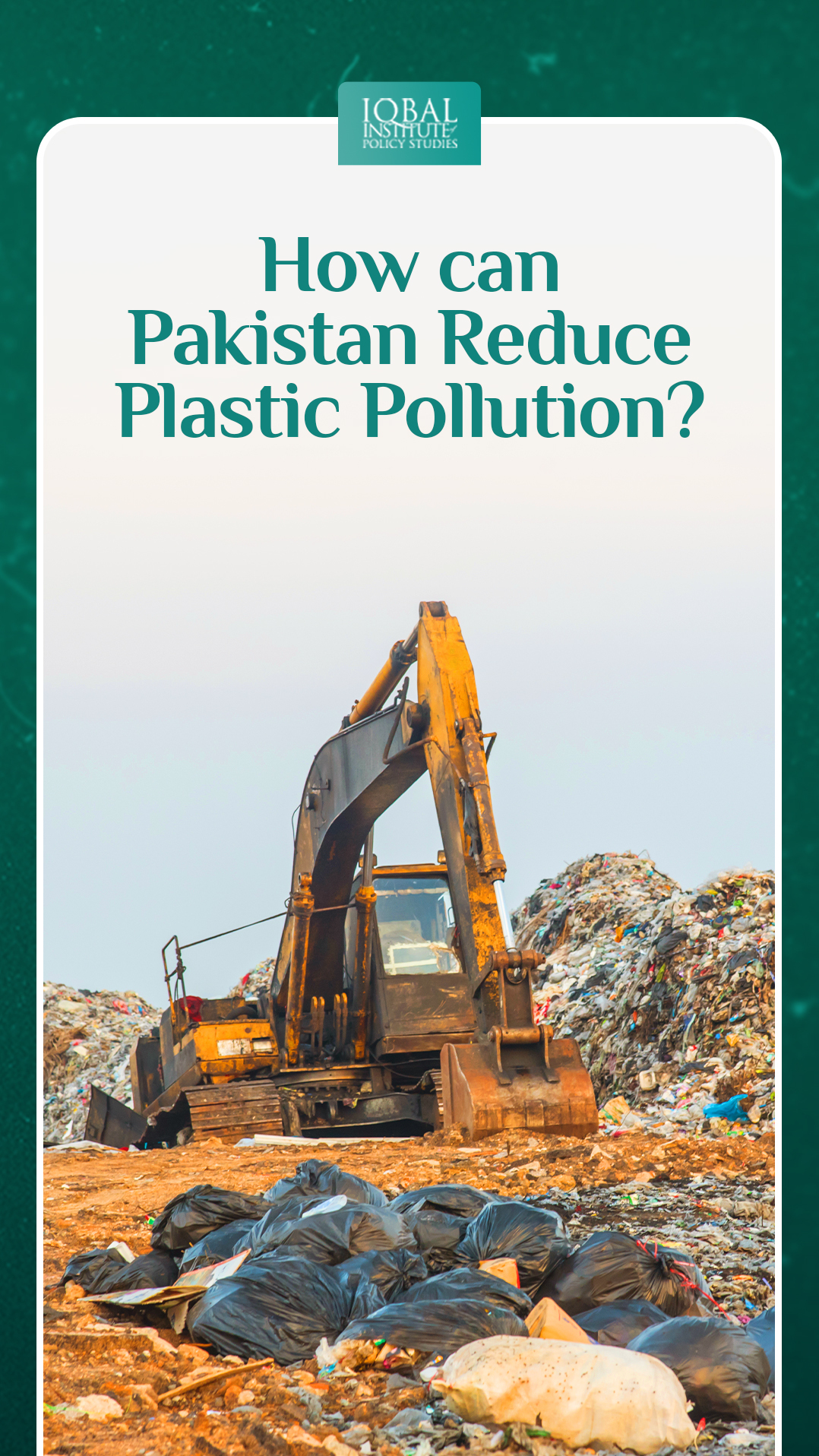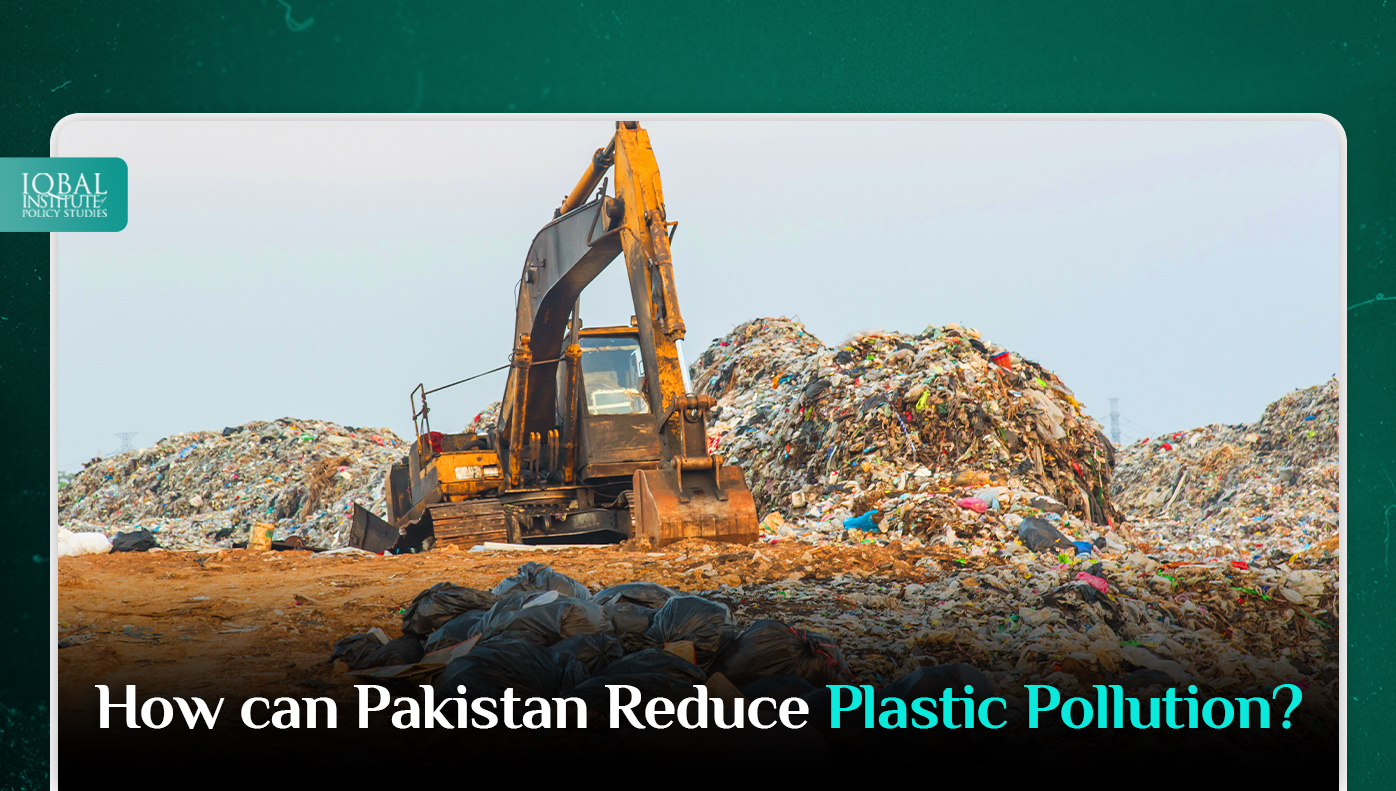Plastic pollution is pervading and exponentially growing problem. It can potentially modify ecosystems’ capacity to adapt to climate change, altering millions of habitats, natural processes, and social and economic well-being. A growing number of players from governments, public society, and academia are pushing for initiatives to confront the crisis at its source by limiting plastic production in light of the magnitude and effects of plastic pollution. However, laws prohibiting or taxing single-use plastics are not doing enough to reduce pollution globally. Most rules only apply to plastic bags, which account for a very small portion of plastic trash and are better at decreasing littering than reducing plastic usage. Only a few countries have landfill and incinerator charges encouraging recycling, whereas most developing nations’ garbage collection systems are inefficient and non-existent. Addressing the end-of-life of plastic products will not be sufficient to resolve this worldwide catastrophe. Instead, enhancing recycling and waste management systems, improving product design to account for the transient nature of disposable packaging, and reducing the production of superfluous single-use plastics through global collaboration might mitigate plastic pollution.
Plastic Pollution in Pakistan
One of South Asia’s greatest proportions of improperly managed plastic is in Pakistan, where over 3.3 million tonnes of plastic garbage are wasted annually (UNDP, 2021). Pakistan is not among the top producers of plastic waste, such as China, Indonesia, the Philippines, and Vietnam. However, due to rapid urbanisation, a growing population, and increased consumerism, an unnerving amount of plastic waste is dumped into landfills or scattered across the country’s land and water bodies, endangering the environment and human health. Pakistan is the second-largest domestic market for plastic, with a meagre 18% recycling potential and only 3% of plastic being recycled locally (Shahid, 2023). Moreover, the country uses between 55 billion and 112 billion plastic bags annually (DAWN, 2020). To curb the issue of plastic pollution, Pakistan joined the 128 countries that banned single-use plastic bags in 2019. The ban halted the production of 600,000 kilogrammes yearly (World Economic Forum, 2021). However, it was unsuccessful due to law enforcement’s lack of a cheap alternative and strict action. At present, much spadework is required. The government must harmonise its policies, support research into plastic substitutes less harmful to the environment, and mobilise private funding for investments in a circular economy to create enabling conditions and mitigate plastic pollution.
What are the ways to Reduce Plastic Pollution?
Banning Single-use Plastic
One of the most popular and effective legal tools governments should employ is prohibiting the production, distribution, and use of single-use plastic products. Their effectiveness can be aided partly by the ban laws’ adaptability, which allows for exceptions for medical supplies and other important uses while encouraging substitutes like cloth or paper bags. For example, the Marshall Islands banned Styrofoam cups and plates, disposable plastic cups and plates, and plastic shopping bags in 2016 while advocating recycled paper bags and reusable bags. It has been marketed as one of the role models to imitate globally (Excell, 2021). However, some alternatives to plastic bags may also emit microplastics into the environment, have larger carbon footprints, or are challenging to compost. Therefore, a sustainable substitute to single-use plastic products is crucial.
Imposing Taxes and Incentives
Governments can levy taxes to discourage the manufacturing or consumption of single-use plastics or may provide tax breaks, subsidies, and other financial incentives to promote the use of items other than single-use plastics. Taxes and incentives may be imposed on certain industries like supermarkets or plastic manufacturers or goods like plastic coffee cup lids or soda bottles. Governments can also use financial incentives to persuade businesses to use plastic substitutes such as sugar cane bags or to generate money to support cleanup initiatives for plastic trash. These economical tools can efficiently increase reusable and recycled product usage. Portugal imposed a $0.12 per bag tax on manufacturers of specific plastic bag sizes in 2015. The consumption of these bags dropped by 74% four months later (Martinho, Balaia, & Pires, 2017).
Setting Product Standards
Product standards, certifications, and labelling regulations can be developed to inform the public about the negative environmental effects of plastic and the health and safety risks associated with its production and usage. Single-use plastic product legislation can establish requirements for material composition, reusability, biodegradability, compostability and recoverability to ensure the product can be recycled. This strategy can encourage consumers to select sustainable items. For example, manufacturers and US packaging providers must provide their customers with a certificate of conformity attesting that their packaging does not include more heavy metals than allowed owing to recycled content (Shen, 2022).
Adopting Extended Producer Responsibility Programs (EPR)
Extended Producer Responsibility (EPR) programs can ensure that producers continue to bear responsibility for single-use plastic items throughout their lifecycles. By making manufacturers accountable for single-use plastics throughout the collection, recovery, recycling, or reuse of their products, these legislative measures help make certain more environmentally friendly designs. For instance, in 1991, Germany adopted the EPR system in which companies are forced to pay a licence fee based on the quantity and type of packaging they introduce into the market each year. The ordinance reduced garbage by an estimated 1 million tonnes (World Economic Forum, 2021).
Recycling Plastic Waste into Building Materials
Several organisations and countries have developed building materials from plastic waste as plastic is strong, durable, waterproof, lightweight, easy to mould, and recyclable. For example, plastic trash is being upcycled into building materials by the Vietnamese company Plastic People. It takes waste from businesses or homes, sorts it, shreds it, and melts it into boards that may be moulded for various uses, including furniture, flooring, walls, roofing, and even communal housing (plasticpeople, 2021).
Reusable Containers
Adopting the buy anywhere, return anywhere, and reuse anywhere approach by providing substitutes to single-use plastic can limit plastic pollution. This approach involves enabling a variety of goods, such as shampoo and laundry detergent, to be sold in reusable containers that can either be filled again after they are empty or returned to the store. This would allow consumers to track their plastic consumption and savings as they only have to pay for the contents, not the cost of plastic packaging or bottles.
Using Recyclable Fabric
Fabric made of polypropylene can take the place of Polyvinyl Chloride (PVC) or polyethene, which can be used in agricultural buildings like hoop houses and high tunnels. Polypropylene emits 80% fewer greenhouse gases (CO2) than PVC fabrics and 40% fewer emissions than polyethene (Thompson, 2022). Its fabrics are less expensive in the long run than PVC or polyethene counterparts. After a product’s useful life has passed, it can be recycled into something different.
Incorporating Artificial Intelligence (AI) in the Recycling Process
AI-powered software has been developed in Lebanon to identify and classify recyclable materials on conveyor belts instantly. The human sorting procedure is made more effective by the Vitron software, which also increases the number of recycled plastics (diwama, 2021). It can even identify brand names on packaging, which means that providing information on product recovery rates can assist businesses in achieving their sustainable goals.
Encouraging the Practice of the Net-Zero Waste Concept
The net-zero waste concept is the appropriate manufacture, use, reuse, and recovery of goods, packaging, and materials without burning them and releasing any pollutants into the air, water, or land that could endanger human health or the environment. Introducing this concept in all socio-economic sectors via campaigns, educational programs, and digital platforms can make consumers responsible for their choices and actions, leading to less plastic use.
Conclusion
There is no miracle cure for the global plastic crisis. Governments must address plastic pollution at the national and sub-national levels, deciding what policy methods to utilise and what legislation will support their goals. Immediate actions must be taken to save the environment and the future before it is too late.
References
DAWN. (2020, September 21). Plastic ban. Retrieved from https://www.dawn.com/news/1580816
diwama. (2021). Recover the maximum value from your waste streams. Retrieved from https://diwama.com/
Excell, C. (2021, April 6). 4 Ways to Reduce Plastic Pollution. Retrieved from World Resources Institute: https://www.wri.org/insights/4-ways-reduce-plastic-pollution
Martinho, G., Balaia, N., & Pires, A. (2017, January 26). The Portuguese plastic carrier bag tax: The effects on consumers’ behaviour. National Library of Medicine. doi:https://doi.org/10.1016/j.wasman.2017.01.023
plasticpeople. (2021). We have developed a circular solution to clean up the environment while creating meaningful jobs for our community. Retrieved from https://www.plasticpeople.vn/#7_Process
Shahid, J. (2023, February 2). Only 3pc of plastic is recycled in Pakistan: UNEP head. Retrieved from DAWN: https://www.dawn.com/news/1734827
Shen, Y. (2022, August 16). Packaging Materials Regulations in the United States: An Overview. Retrieved from Compliance Gate: https://www.compliancegate.com/packaging-materials-regulations-united-states/
Thompson, E. (2022, December 14). These entrepreneurs are helping reduce plastic in our ecosystems. Retrieved from World Economic Forum: https://www.weforum.org/agenda/2022/12/plastic-recycling-waste-ecosystems/
UNDP. (2021, August). Rethinking Pakistan’s Relationship with Plastics. UNDP Innovation Accelerator Lab Pakistan. Retrieved from https://www.undp.org/sites/g/files/zskgke326/files/migration/pk/Intelligence-Report.pdf
World Economic Forum. (2021, November 19). 4 ways Pakistan is tackling plastic waste and pollution. Retrieved from https://www.weforum.org/agenda/2021/11/4-ways-pakistan-is-tackling-plastic-waste-and-pollution/
World Economic Forum. (2021, April 16). COVID-19 has made plastic pollution worse – here are 4 things we can do. Retrieved from https://www.weforum.org/agenda/2021/04/4-ways-to-reduce-plastic-pollution/



Leave a Reply